Reproduction of fuchsia is fun and easy
Amazing beautiful fuchsia shrub pleases with its magical colors all year round. She has flowers of striking shape that remind someone of magic lanterns, to someone of fluttering butterflies. Miraculous evergreen bush belongs to the Cyprian family.
Content:
- Features and types of plants
- Fuchsia seed propagation
- Propagation of fuchsia by cuttings
- Fuchsia transplant
- Plant care
- Diseases and pests
Features and types of plants
In the wild, fuchsia grows in New Zealand, in Central and South America, Polynesia. In 1696, fuchsia was discovered and named after the famous botanist from Germany Leonarto von Fuchs by the French scientist Charles Plumier during a trip to the West Indies.
Fuchsia, due to its exquisite beauty, is very popular among flower growers and amateurs.
To date, more than 100 varieties have been bred fuchsia... The most popular are the following types:
- Shiny
- Bolivian
- Magellan
- Shield-shaped (thyrse-flowered)
- Thin
- Three-leaf
- Reclining
- Graceful
- The hybrid is the most famous among us and enjoys well-deserved love.
There are many hybrid varieties:
- Ampelny
- Non-double hybrids
- Semi-double hybrids
- Terry hybrids
- Racemose hybrids
All these types fuchsia are shrubs with a height of 0.7 - 2.5 meters with beautiful flowers.
Fuchsia seed propagation
It is important to know that the traits of the mother variety may not be transmitted with this method. Seeds you can buy in the store, or you can try to get it yourself. This is a rather difficult breeding method.
As soon as the flower bud opens, the stamens must be removed from it. It is even better to carry out this operation on an unblown bud. This is done to avoid self-pollination and insect pollination. After the bud has blossomed, apply pollen from another (parent) plant on the stigma of the pistil. If there is only one flower available, transfer the pollen from one flower (from the stamens) with a cotton swab or brush to the pistil of another. The advantage of this method of pollination is the preservation of the varietal properties of the plant.
Then put a bag on the fertilized flower, make it from available tools (paper or gauze), secure with threads. Such isolation is necessary so that insects cannot pollinate the flower.
After fertilization, an ovary should appear, from which a red ball grows. As it ripens, it becomes first purple, then dark purple.
The fruits will ripen within a few weeks. Ripe fruits are harvested in sunny weather, dried, then carefully removed the seeds... It is important to dry them well, otherwise they will become covered with mold. Fold into bags. Place the seeds in the refrigerator and store in the vegetable compartment until spring.
Tips for planting seeds:
- The best time for landing seed March or April.
- The soil (take not too fertile) is poured into a shallow tray in a small layer.
- Do not let a crust appear on the soil surface.
- Fuchsia seeds sowing on the surface of the soil, since they are very shallow, sand can be added to them. Then lightly sprinkle with earth.
- The seed tray is covered with glass or polyethylene, thus creating a greenhouse environment, and placed in a sunny room.
- The most optimal temperature for germination is from 15 to 18 degrees.
- After the emergence of shoots (after three to four weeks), it is necessary to ventilate the greenhouse every day for fifteen minutes.
- You also need to loosen the ground daily and remove condensation.
- Watering carried out by a spray gun. The water should settle and be at room temperature.
- When the first leaves appear, the sprouts are moved to the pots.
- The soil is prepared as follows - take in equal parts humus, sand, leaf and sod land. If one of the components is missing, it can be replaced with peat.
- When the plant grows to a height of about ten centimeters, pinch its top.
Propagation of fuchsia by cuttings
In this way, fuchsia is propagated in the spring - in February-March (the optimal period), or in the fall - in August or September. Propagate this way fuchsia possibly in summer, but since fuchsia is hard to tolerate the heat, there is a danger of rotting cuttings.
Young shoots are best suited for reproduction. Older shoots will work as well, but since they are hardened, the roots will take longer to form. Shoots 10-20 centimeters high are placed in a glass of water, after removing the leaves that may be in the water and rot. The large leaves at the top of the shoot are also recommended to be removed. The sprout doesn’t have roots to feed on, but leaves extract nutrients and water from it.
There is no point in feeding the cuttings in water, since they already form roots so quickly.
To increase humidity, sprout an impromptu greenhousecovering a glass with it with polyethylene. The water should be filtered, you can add an activated carbon tablet to it to reduce the risk of decay. On the fourth day, the first roots appear, full-fledged roots are formed within two weeks. Although planting can be carried out even when the first roots appear. Planting is carried out in prepared soil.
Another breeding method cuttings - this is rooting immediately in the ground. The soil must be loose. Can be used:
- Peat-based flower soil.
- Coco-soil.
- Peat tablets.
- Coconut fiber.
Pour the soil into a small container; disposable plastic cups are well suited for this purpose. We place the cuttings in the groove made with a stick so that the lower leaves do not touch the ground. Moisten the soil. Make an individual greenhouse for each cuttings (cover with the same glass or plastic).
Cuttings in greenhouses must be ventilated every day to avoid rotting cuttings.
After the appearance of the roots (after two or four weeks), the sprouts need to be taught to be without a greenhouse. This should be done by gradually increasing the "open" period of time to a whole day. When the roots fill the entire cup (form an earth ball), you need to make pick (transplant into a large container). You cannot transplant the plant into a pot that is too large, fuchsia does not like extra space. After rooting in any way cuttings can be transplanted to a permanent place in pots.
Fuchsia transplant
It is recommended to change the land every spring. For transplanting, prepare the soil consisting of the following components:
- Sand - 1 part.
- Peat soil - 2 parts.
- Clay-sod land - 3 parts.
Pots for transplants choose a medium size so that the flower is not cramped or too loose. Place a drain on the bottom. The drainage height should be approximately 1/5 of the pot height.
Before transplanting, it is necessary to prune the shoots (at least 1/3) and make the roots shorter.
After transplanting, the flower is placed in a sunny room and abundantly sprayed and watered regularly. If everything is done correctly, young shoots and flowers will form very soon. In summer, the flower can be transplanted into fresh soil again.
Plant care
Fuchsia loves light, although it gets sick if the sun's rays hit it. Better to place it in a sunny room at some distance from the window. The flower feels good in a moderately warm or even cool room (with temperatures below 20 ° C). When the room is too warm, fuchsia loses flowers and leaves. The heat can cause the death of the plant.
Watering fuchsia:
- To water flower follows abundantly, keep the ground moist.
- By the end of the growing season (development, growth), gradually reduce watering from October.
- At the end of November, you can almost stop watering.
- Remember that for watering fuchsia, it is important to defend the water, and it should be at room temperature. This condition must be met without fail.
- In winter, fuchsia enters a dormant period, and it must be kept in the cold (no higher than 10 ° C). Watering should be done sparingly to avoid root rot. If the temperature is warmer than 10 ° C, water the plant often.
- If there is a drip tray under the pot, be sure to drain the water every day. At least one day, water will remain in the pan, the flower may die. It is best to put pebbles in the tray, then the bottom of the pot will not touch the water.
- Native to the subtropics, fuchsia grows well in humid climates, so spray water regularly around the plant. Water needs to be defended during the day.
- From May to August, fuchsia should be sprayed in the morning (before 9 o'clock) and in the evening (after 6 o'clock), in the fall - once every two to three days. Place the flower pot in one place and do not rearrange it, changing the place causes the flowers to drop.
- From March to September, fuchsia must be fed. For this purpose, any fertilizer for flowering houseplants is suitable. In winter, you do not need to spray and feed fuchsia.
Withered buds need to be removed. Flowers appear on young shoots, so the old ones must be cut off. During the entire growth time, fuchsia needs prune and pinch.
To grow a tree, you also need to use pruning.
To start creating a tree, leave one shoot that grows vertically, make a support for it, and cut the rest until the plant reaches the desired length. After that, you need to cut off the top and leave a few shoots for crown formation... In about three years you will have a beautiful tree with a lush crown.
Diseases and pests
If correct grow plant then from diseases it gets rid of itself. For example, when a flower is exposed to sunlight, spots appear on the leaves. Move the fuchsia to another location, the spots will disappear by themselves.
With excessive watering, root rot is possible.
Unfortunately, in this case it will not be possible to save the plant. Neither transplanting nor reducing watering will help. Even cuttings are unlikely to take root. The reason for the yellowing of the leaves (if this is not a natural process) may be the depletion of the soil, lack of magnesium and iron. In order to combat this phenomenon, you can use spraying with a solution of magnesium sulfate, feeding with preparations containing iron.
Leaves may turn yellow due to improper watering or sunburn caused by spraying during the day. For fungal (rust) infections, use fungicides.
Fuchsia can be attacked by pests such as:
- Aphid.
- Weevil.
- Mite.
- Whitefly.
To destroy the first three, use Aktelik or Gaupsin. These insecticides are non-toxic to humans. To cope with the whitefly will have to tinker. The first step is to isolate the flower to prevent spread pest to other plants. To combat this pest, use drugs from the group of neurotoxins. A single dose is treated with a leaf, a double dose - at the root. A good effect is given by the use of "Aktara" (solution in a ratio of 4gr: 5l). They need to be processed three or four times. It is better to use alternately "Aktara", then "Confidor".Add rinsing the leaves with soapy water to remove the larvae.
It may seem that growing fuchsia is troublesome. But the plant, nicknamed by gardeners "dancing flower", will undoubtedly delight you with its beauty. You will not regret your time!
More information can be found in the video.



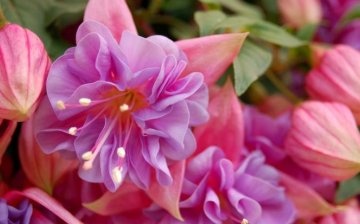
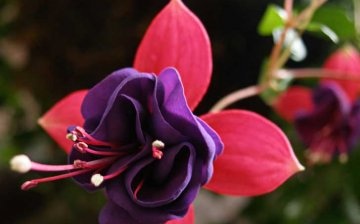
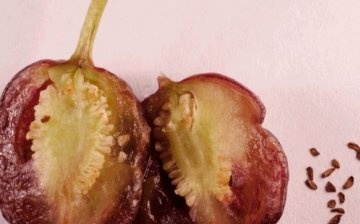
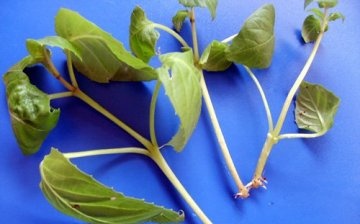
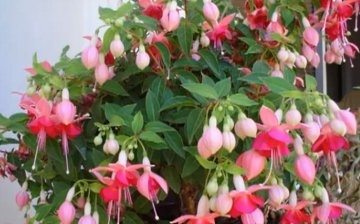
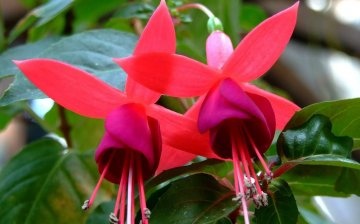
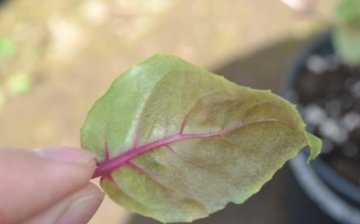








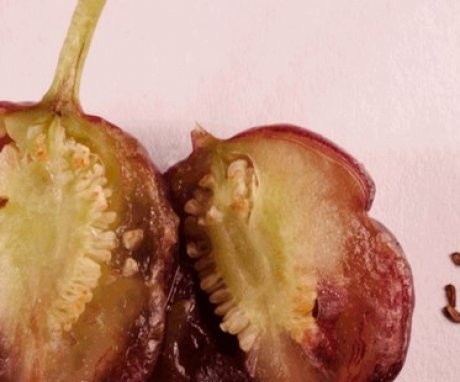
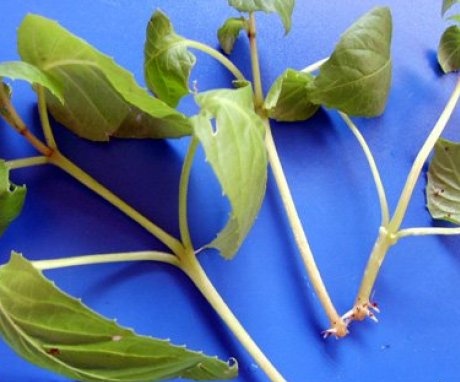

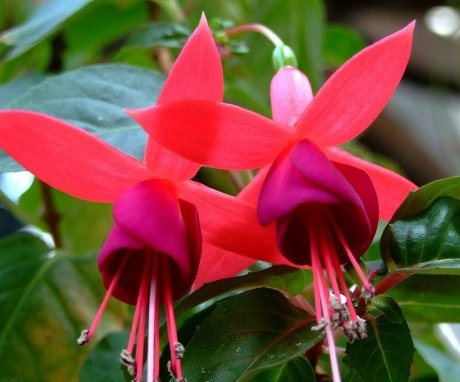

Fuchsia is one of my favorite plants. It looks sooooo beautiful and always pleasing to the eye. I'm wondering, and if in the heat you remove the flower in a dark place, that is, remove it from direct sunlight, how will it feel? Will this help to somehow save him from the pernicious heat for him?